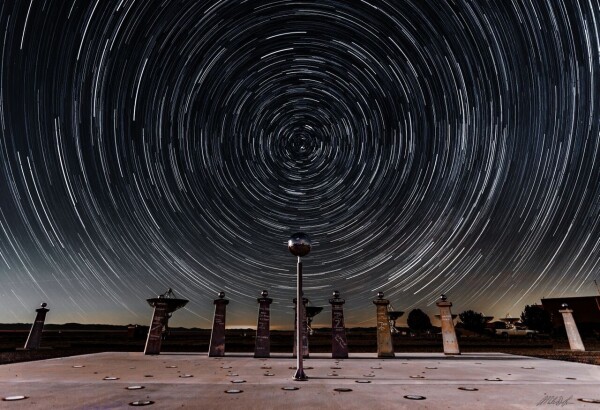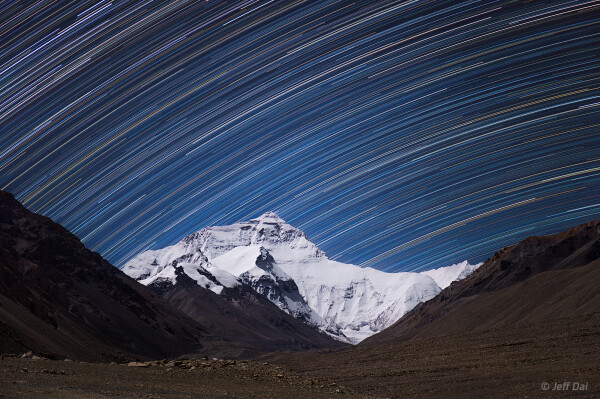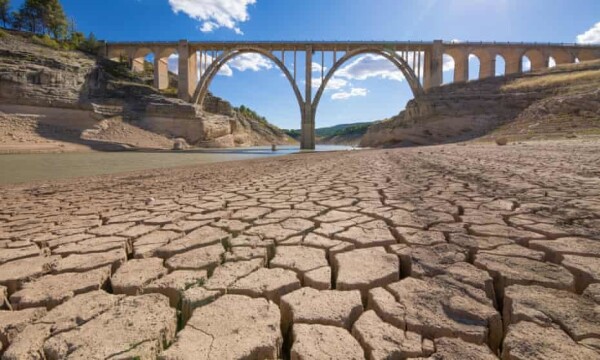Search
Items tagged with: earth
APOD: 2018 July 13 - Star Trails and the Bracewell Radio Sundial
A different astronomy and space science related image is featured each day, along with a brief explanation.apod.nasa.gov
Little Planet Lookout
* Image Credit & Copyright: Gyorgy Soponyai
Explanation:
Don't panic. This little planet projection looks confusing, but it's actually just a digitally warped and stitched, nadir centered mosaic of images that covers nearly 360x180 degrees. The images were taken on the night of October 31 from a 30 meter tall hill-top lookout tower near Tatabanya, Hungary, planet Earth. The laticed lookout tower construction was converted from a local mine elevator. Since planet Earth is rotating, the 126 frames of 75 second long exposures also show warped, concentric star trails with the north celestial pole at the left. Of course at this location the south celestial pole is just right of center but below the the little planet's horizon. the little planet's horizon.
https://apod.nasa.gov/apod/ap181109.html
#space #earth #astrophotography #photography #astroart #art #science #nature
APOD: 2018 November 9 - Little Planet Lookout
A different astronomy and space science related image is featured each day, along with a brief explanation.apod.nasa.gov
Mount Everest Star Trails
* Image Credit & Copyright: Jeff Dai (TWAN)
Explanation:
The highest peak on planet Earth is framed in this mountain and night skyscape. On September 30, the digital stack of 240 sequential exposures made with a camera fixed to a tripod at an Everest Base Camp captured the sheer north face of the Himalayan mountain and foreground illuminated by bright moonlight. Taken over 1.5 hours, the sequence also recorded colorful star trails. Reflecting the planet's daily rotation on its axis, their motion is along gentle concentric arcs centered on the south celestial pole, a point well below the rugged horizon. The color of the trails actually indicates the temperatures of the stars. Blueish hues are from hotter stars, and yellow to reddish hues are from stars cooler than the Sun.
https://apod.nasa.gov/apod/ap181201.html
#space #earth #astrophotography #photography #astroart #art #science #nature
APOD: 2018 December 1 - Mount Everest Star Trails
A different astronomy and space science related image is featured each day, along with a brief explanation.apod.nasa.gov
World needs to offer trillions, not billions in overseas support
https://www.theguardian.com/environment/2023/jun/18/countries-are-drowning-climate-expert-calls-for-urgent-rethink-on-scale-of-aid-for-developing-world
#ClimateChange #deforestation #FossilFuels #ActNow #environment #EndFossilCrimes #ClimateCrisis #Science #warming #Nature #climate #development #gasemissions #ClimateEmergency #climatecrisis #wildlife #ClimateAction #photo #photography #GlobalWarming #pollution #mangrove #news #biodiversity #earth
‘Countries are drowning’: climate expert calls for urgent rethink on scale of aid for developing world
World needs to offer trillions, not billions in overseas support, says leading climate economist Avinash PersaudFiona Harvey (The Guardian)
Brilliant video by Bartosz Wojczyński. https://artuniverse.eu/gallery/190705-rotation24h #nature #wonder #earth






